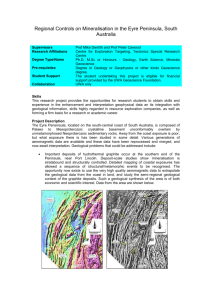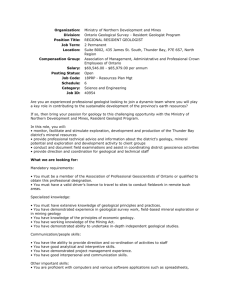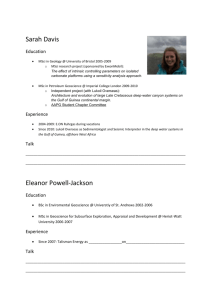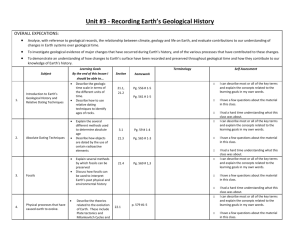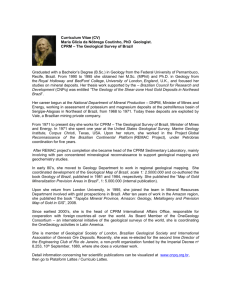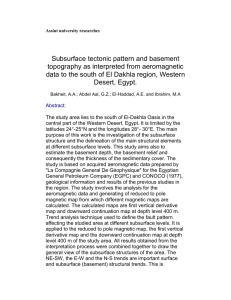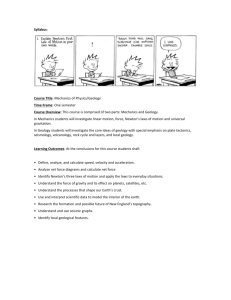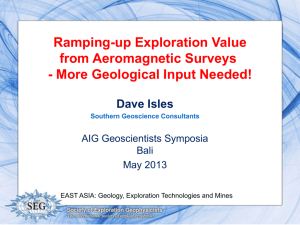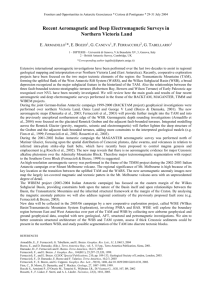Aeromagnetic Responses of World
advertisement
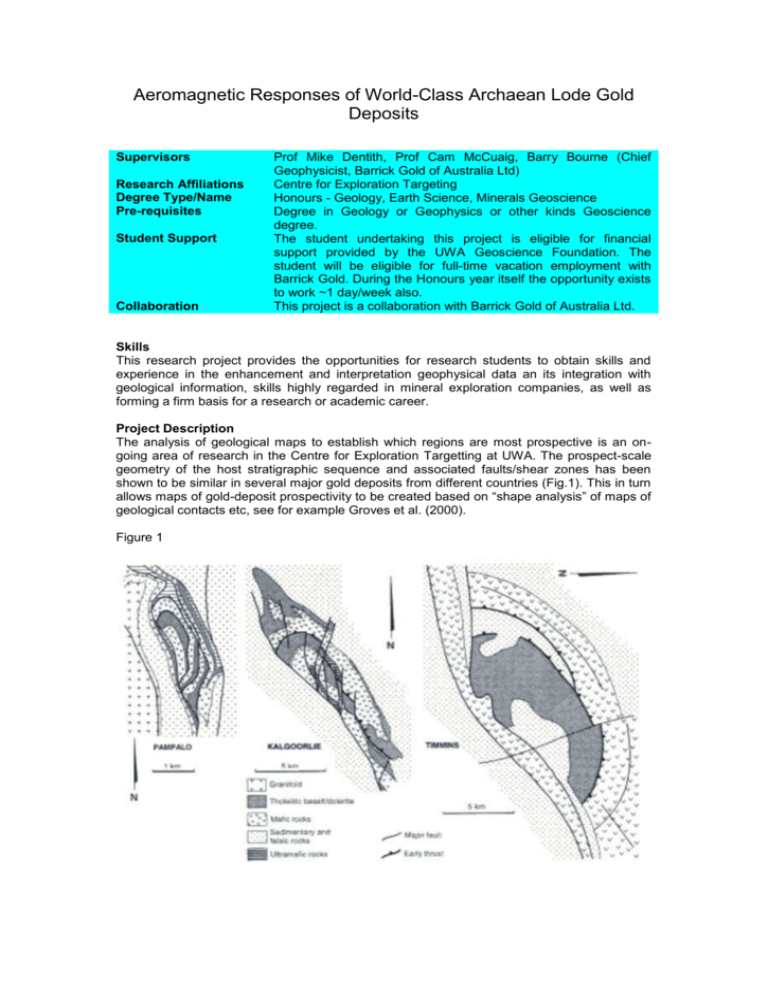
Aeromagnetic Responses of World-Class Archaean Lode Gold Deposits Supervisors Research Affiliations Degree Type/Name Pre-requisites Student Support Collaboration Prof Mike Dentith, Prof Cam McCuaig, Barry Bourne (Chief Geophysicist, Barrick Gold of Australia Ltd) Centre for Exploration Targeting Honours - Geology, Earth Science, Minerals Geoscience Degree in Geology or Geophysics or other kinds Geoscience degree. The student undertaking this project is eligible for financial support provided by the UWA Geoscience Foundation. The student will be eligible for full-time vacation employment with Barrick Gold. During the Honours year itself the opportunity exists to work ~1 day/week also. This project is a collaboration with Barrick Gold of Australia Ltd. Skills This research project provides the opportunities for research students to obtain skills and experience in the enhancement and interpretation geophysical data an its integration with geological information, skills highly regarded in mineral exploration companies, as well as forming a firm basis for a research or academic career. Project Description The analysis of geological maps to establish which regions are most prospective is an ongoing area of research in the Centre for Exploration Targetting at UWA. The prospect-scale geometry of the host stratigraphic sequence and associated faults/shear zones has been shown to be similar in several major gold deposits from different countries (Fig.1). This in turn allows maps of gold-deposit prospectivity to be created based on “shape analysis” of maps of geological contacts etc, see for example Groves et al. (2000). Figure 1 Shape analysis methods are critically dependent on the availability of reliable geological maps of sufficient detail. On-going research in the Centre for Exploration Targetting is developing a complementary exploration methodology where the basis for the prospectivity analysis is an aeromagnetic dataset. Images of spatial variations in total magnetic intensity (TMI) and other related products have become an indispensable means of mapping the geology during mineral exploration. In areas where outcrop is poor or geological mapping rudimentary, aeromagnetic data are the primary means of determining the local geology. In this project, using aeromagnetic data from the vicinity of well-documented major gold deposits in granitoid-greenstone terrains in Ontario (e.g. Kirkland Lake (Fig.2) and Timmins (Fig.3)), Quebec, Western Australia and Finland, geological characteristics associated with a recognisable response in the magnetic data will be sought. The magnetic data from the area of each will be interpreted in detail, concentrating on structural and lithological mapping in the expectation of establishing which aspects are recognisable in aeromagnetic datasets. Responses from the different deposits will be compared to assess whether they can be categorised according to their magnetic (and where data are available gravity) responses. The final outcome will be a unique collection of self consistent magneto-tectonic analyses of deposits that comprise one of the world’s major styles of gold mineralisation. The student researcher will be part of team of researchers working on the geophysical signatures of mineral deposits within the CET. Outcomes from this project will be utilised by other researchers at UWA in their design of pattern recognition algorithms that seek to create prospectivity maps using aeromagnetic data. Figure 2. Aeromagnetic image of the Kirkland Lake gold camp, Ontario Figure 3. Aeromagnetic image of the Timmins gold camp, Ontario Recommended Reading Groves, D.I., Goldfarb, R.J., Knox-Robinson, C.M., Ojala, J., Gardoll, S., Yun, G.Y. and Holyland, P., 2000. Late-kinematic timing of orogenic gold deposits and significance for computer-based exploration techniques with emphasis on the Yilgarn Block, Western Australia. Ore Geology Reviews, 17, 1-38. Robert, F. and Poulsen, K.H., 1997. World-class Archaean gold deposits in Canada: An overview. Australian Journal of Earth Sciences, 44, 329-351.


